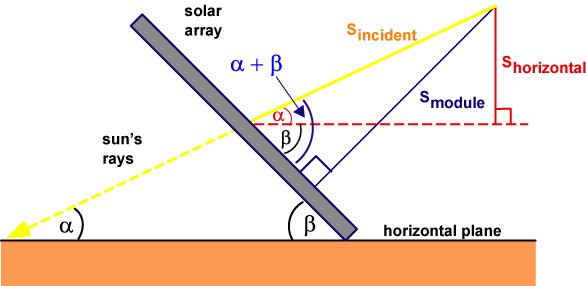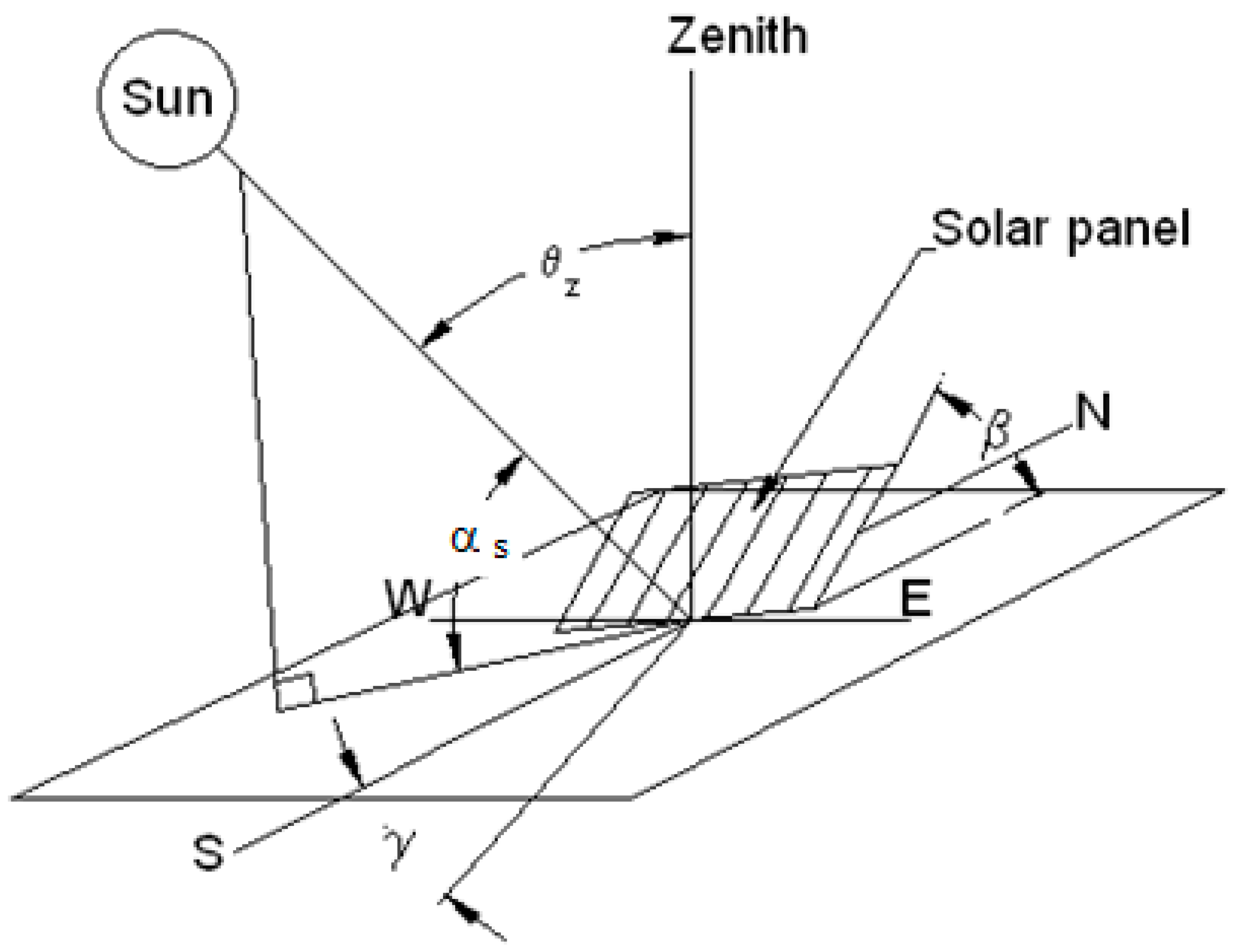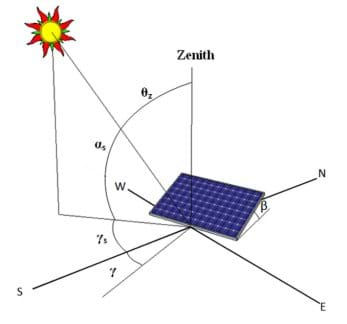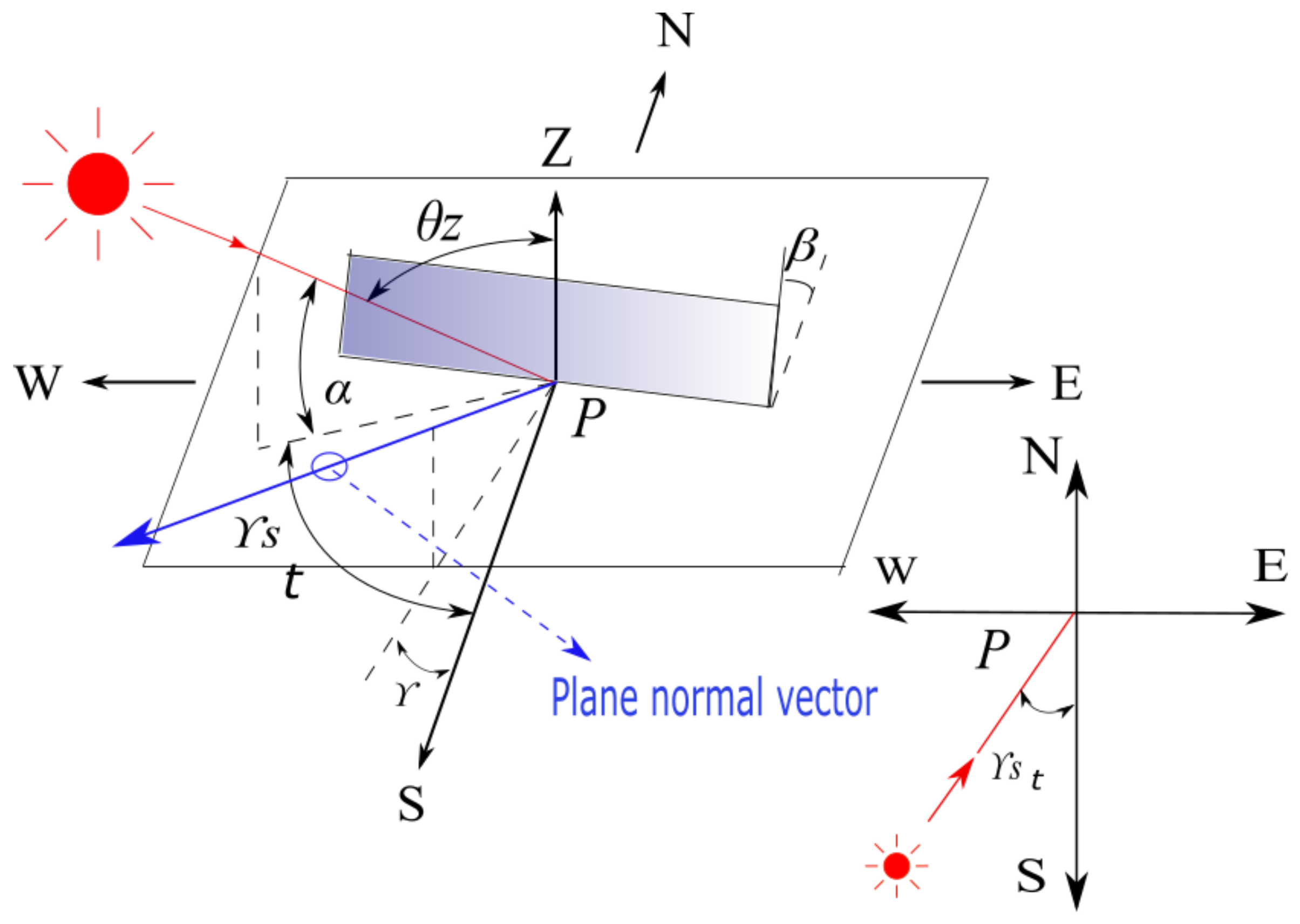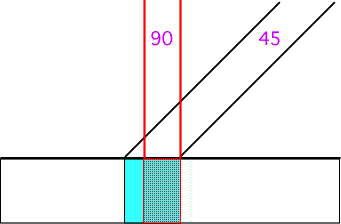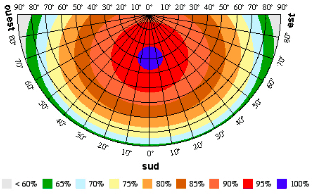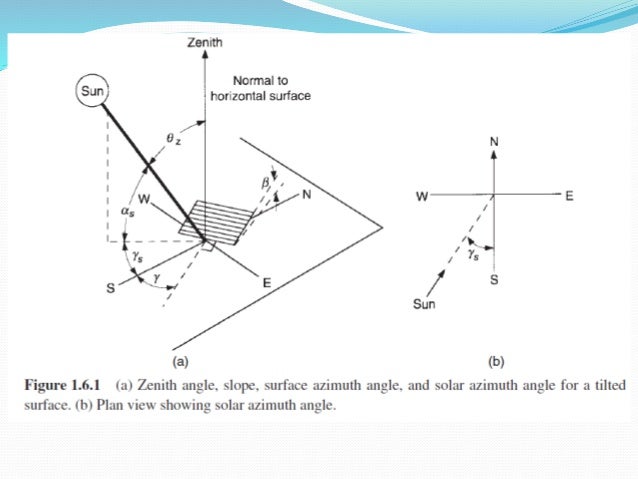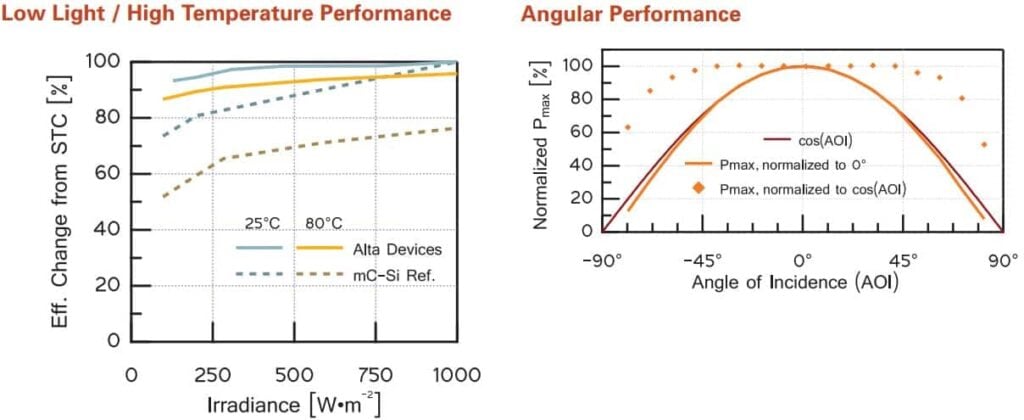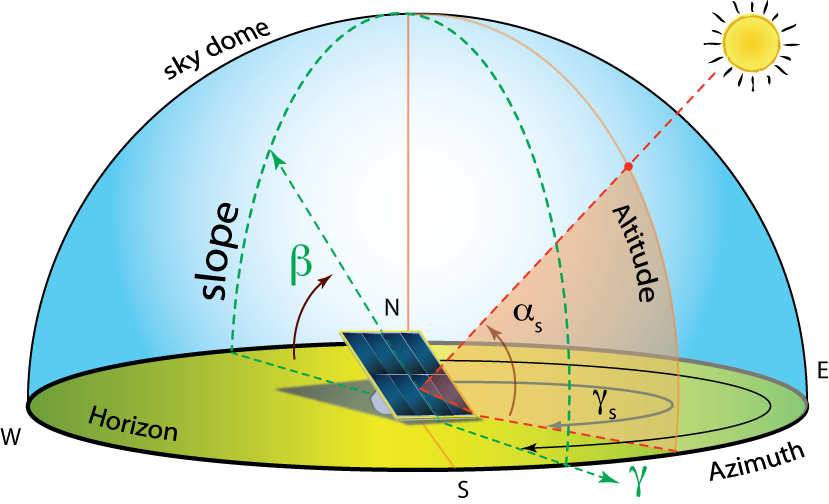Solar panels have been designed to give a relatively flat voltage output within a certain span in this case 0 45 0 solar panel perpendicular with solar rays.
Angle of incidence solar panel specs.
A solar panel or solar module is commonly made up of 60 72 or 96 solar cells wired together.
The surface azimuth angle at describes the deviation from the south.
This angle is also called the zenith angle dz.
The solar angle of incidence 0hor on a horizontal surface is a direct function of the sun height ys.
Orientation of the panels.
For the best results solar panels should be oriented towards the south.
A flat roof has a 0 degree tilt and a vertical wall mount has a 90 degree tilt angle.
They have too high of a voltage to charge a 12v battery bank with a traditional charge controller but too low of a voltage to charge a 24v.
The number of cells isn t something that s important to you but the dimensions of the panel is.
A solar cell is a silicon wafer that is usually 125mm x 125mm or 156mm x 156mm in size.
Whether you are installing a solar panel on a flat roof or a pitched roof the output of the solar pv system would be increased by optimizing the tilt angle.
While the angle of your solar panels is important a more important factor in your energy production is going to be the direction your panels face.
The final graph shows that beyond a 45 angle of incidence the tested solar panels will not provide a reliable voltage.
The calculation of the angle of incidence 0tilt on a tilted surface is more complicated.
Grid tie solar panels with 60 cells are often referred to as 20v nominal panels like the solarworld sunmodule 290w solar panel.





